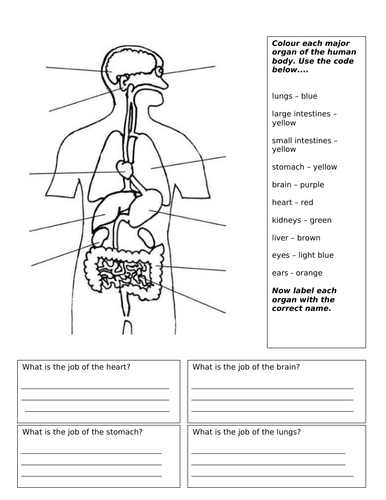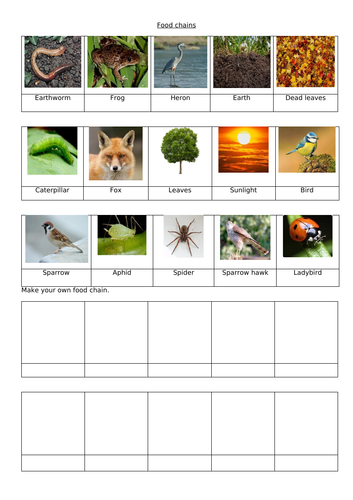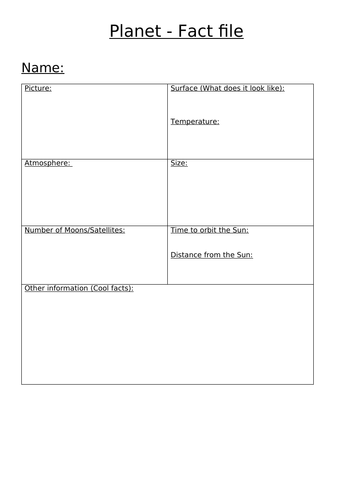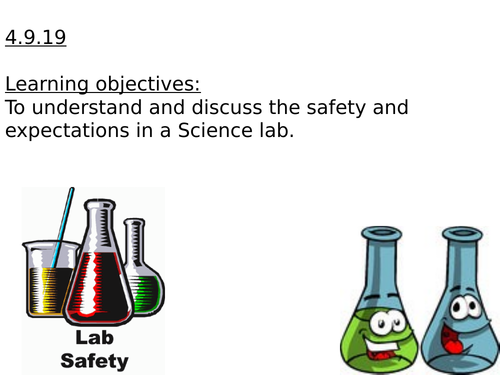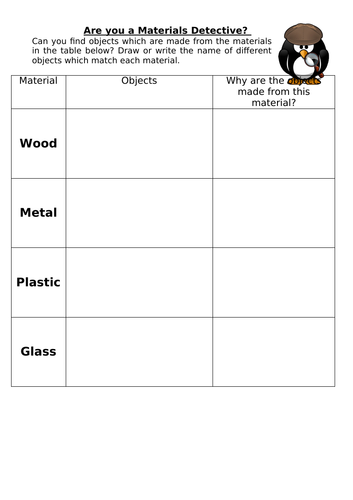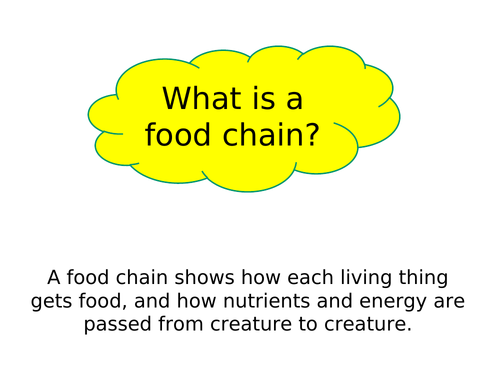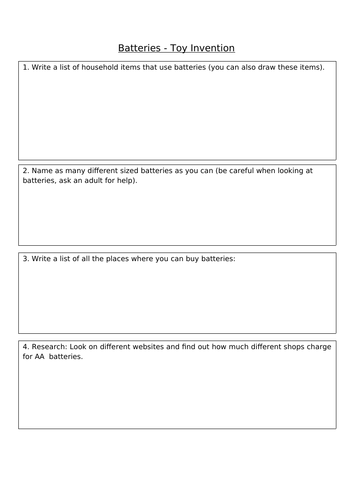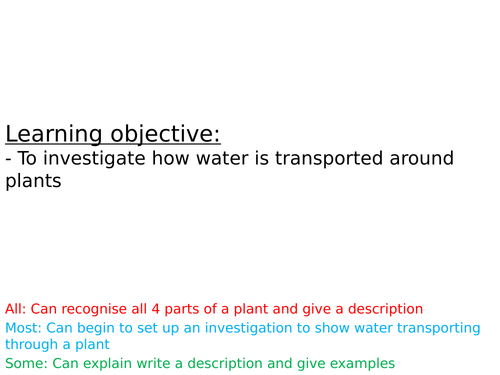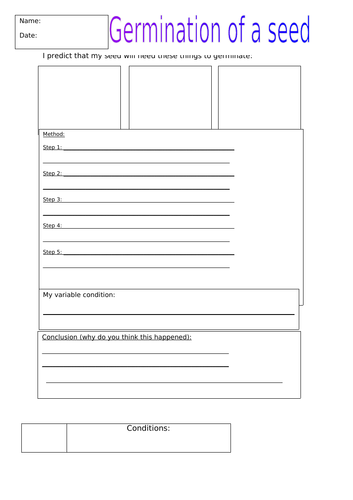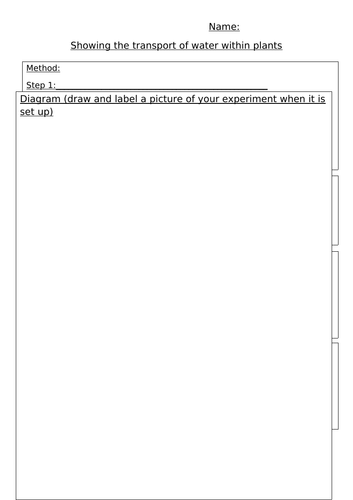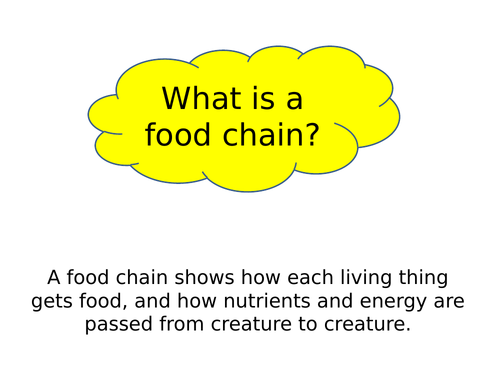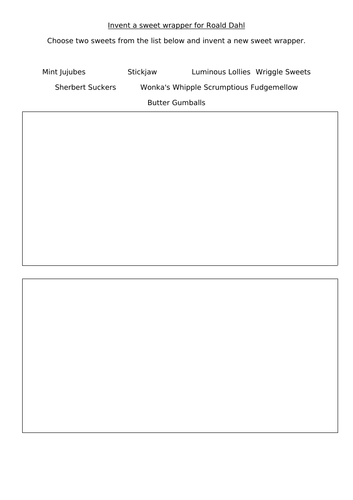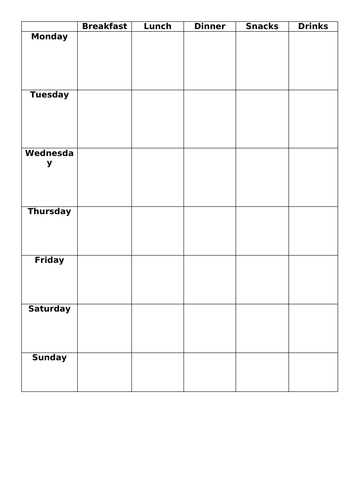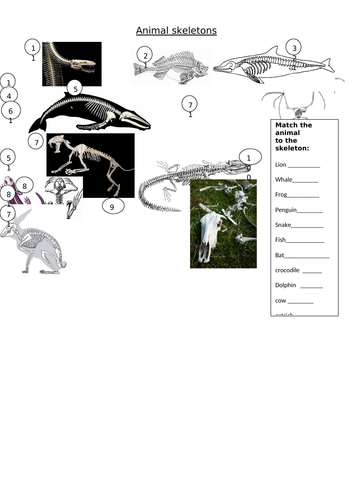
41Uploads
12k+Views
489Downloads
Primary science

Human body organs
This resource is great for students of all ages to recognise organs within the human body.
Pupils are given an empty diagram of the human body and are required to label the key organs; once the organs have been labelled and students can then colour each part of the human body using the matching key.
In order to extend learning students can either use their own knowledge or research why certain organs are important and the functions within the body.

Food Chains
A very good visual representation for students involving food chains.
Student will need to cut and stick the top 3 food chains individually and place these into the correct order; showing which animal or plant gives energy to the next animal or plant.
Challenge:
Students can create their own food chains using their own consumers and producers. (consumer eats other plants or animals) (producer grows for animals to eat e.g. grass)
Extension:
Food chains have consumers and producers, can the student name the consumers and consumers within the different food chain.

Planet Fact File Template
A template in order to create a fact file all about the planets in our solar system.
Students can complete their own research using the secondary resources e.g. internet, books and magazines etc. They may also wish to add facts they already may know for each planet.
There is one fact file template; however, I would suggest using the same template to do all 8 planets.
Mars, Venus, Earth, Saturn, Neptune, Mercury, Jupiter and Uranus.
Remember: Pluto is no longer classed as a planet and is now considered by Scientists to be a dwarf planet.
This could be completed as an extension activity - why is Pluto a dwarf planet?

Science lab, safety rules lesson
An interactive Power Point with different Science rules and expectations. You may wish to complete with your students as a quiz, raising hands if you agree or disagree.
Worksheet chart also attached for students to tick if they think the sentence is safe Science or unsafe Science.
E.g. Is running around the classroom safe or unsafe?

Different materials detective hunt
Are you a materials detective?
Students can either go around the classroom, school or their home and look for objects made from different materials.
The materials they are looking for are: wood, plastic, metal and glass. Once students have found an object made from this material they can either write down what they have found or draw a picture - they may wish to do both.
Extension - Why do you think these objects are made from these materials?
E.g. why would a pan be made of metal and not wood?
Once sheet has been completed you may wish to use 4 different colour sticky notes or paper. Students can colour coordinate different objects e.g. all items they can find made from wood, would be colour coordinated with orange.

Food chains - producers, consumers and decomposers
A lesson PowerPoint discussing the meaning of food chains, a definition of key words of the topic - consumers, producers, decomposers, herbivores, carnivores and omnivores. Students at the end of the lesson will be able to create their own food chains and show the different key word for each organism.

Inventions - batteries
Students will complete a range of investigation, design and research activities for this piece of work.
Firstly, they will find a range of household items that require batteries in order to work.
Secondly, they will look at a range of batteries they have found and write down the different sizes of these e.g. AA
Thirdly, students can research different shops that sell batteries and look at the range of different prices.
Students will then be creative and design their own toy, the toy must work only from using batteries. The can decide the size battery it will require, where the battery will be, how the battery will be safe etc.

Water transportation in plants - Investigation
A powerpoint showing the process a plants goes through to complete water transportation, as well as a food colour experiment.
Investigation:
Food colouring water transportation experiment. When food colouring is added to the water in the test tube, the stem will begin to soak up the water and the petals of the flower will change colour. White petals needed and dark food colouring works best.
Step by step method, video of experiment as well as appropriate investigation for KS2 pupils.

Germination of a seed - Experiment planning sheet
A planning sheet for a step by step layout for germination of a seed experiment.
Students in the class all to be given different conditions, no water, no light, no air, no warmth and all conditions; after a few weeks students to see which type of condition was the best to germinate the seeds.

Water transportation experiment
A planning sheet to show water transportation using food colouring. Students can set out their own work correctly in a step by step process by using this sheet.
2 sided planning sheet.
Food colouring water transportation.
Investigation:
Food colouring, a white flower, boiling tube and water. The stem of the flower will soak up the food colouring and change the colour of the petals.
Works best with white petals and dark food colouring.

What is a food chain?
A lesson complete in Science; students learning about different animals and which animals like to eat other animals. Show examples of different food chains and helps students to create their own food chain.
Can easily create class discussions as well as students being able to openly talk about animals and what they already know.

Sweet invention-Charlie and the Chocolate Factory
A resource to complete with students and children either after watching Charlie and the Chocolate Factory or a great English resource to help with imagination.
Worksheet links to both Science (Inventions) and English (creative).
Students can think about and create their own sweets for the film Charlie and the Chocolate Factory.
Extension: student may wish to write about what their sweet would taste like or look like to create imagination for the reader.

Food diary or log
A easy weekly food diary to record and log the different food, drinks and snack you consume within a week.
This food diary is simple for students to use to understand their food and drink intakes - this log can help students to control their eating habits; as well as being expanded upon to understand different food groups, balanced diets, food/ calorie intakes.
Student have found this log enjoyable and allows them to understand they make be over or under consuming each week.

Animal habitats and adaption
A worksheet to support and understand different animal habitats and adaption. On the worksheet there is a chart with the animals: tiger, zebra, spider, shark and tortoise. Students will need to complete their chart for where the animal lives (habitat) and how it has changed to live in this area (adaption).
For example:
A zebra =
habitat a long grassed area
adaption - it has stripes to hide in the grass from other animals.
Students to complete their chart either using their own knowledge or through secondary research - e.g. books or internet.

Animal skeletons
A worksheet designed around animal skeletons. The pictures used are a range of real life examples as well as designed versions; this allows students to understand and see examples of different forms of media; but also allows them to see real life skeleton bones which they may not have done before.
The first activity is a matching activity to match the skeleton with the name of the animal.
Activity 2 - research the different between invertebrates and vertebrates. Students may use the internet or books to form their answers and to understand the differences.
Activity 3- Students can either research or use their own knowledge to think about different animals which may or may not have a backbone.

